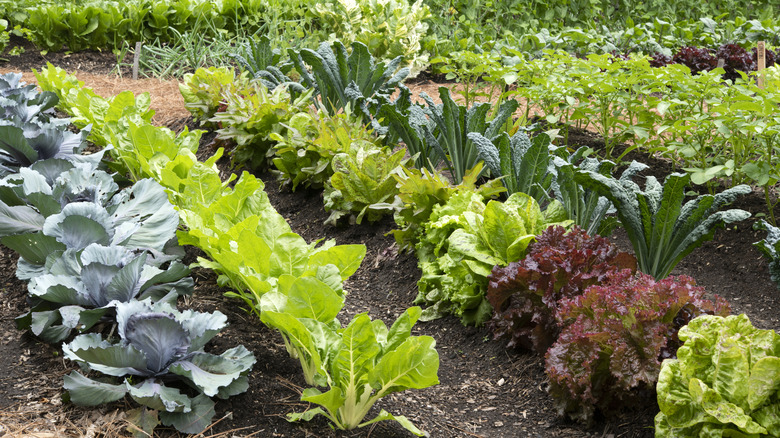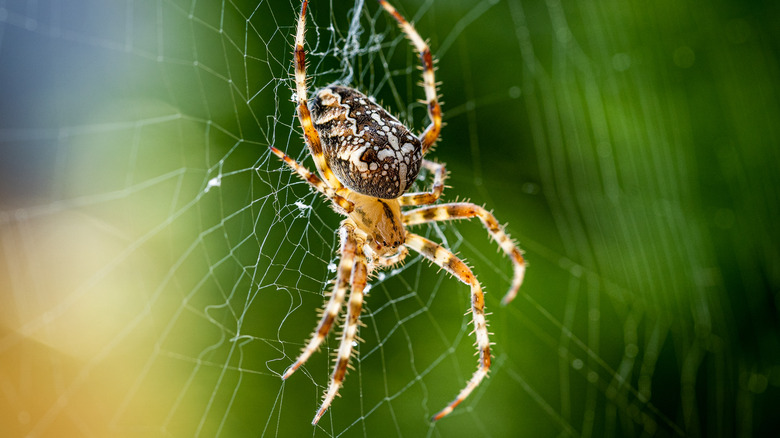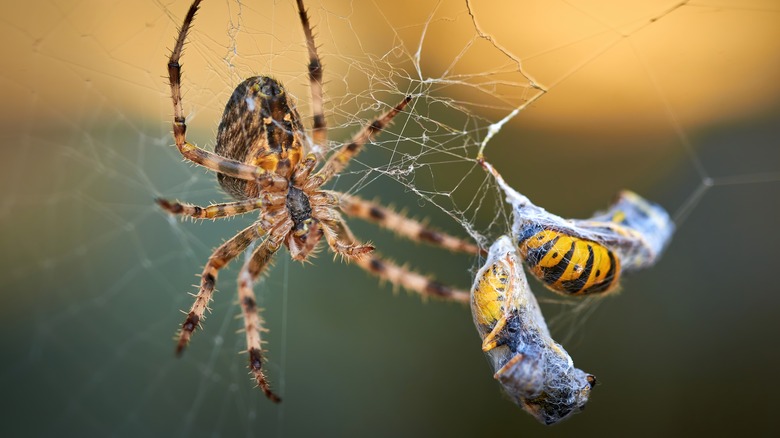The Beneficial Garden Spider You Want In Your Vegetable Garden
Because of their spooky, villainized reputation, spiders are often misunderstood by humans as unwanted and unpleasant intruders. However, you may want to think twice before trying to get rid of spiders in the garden, as this couldn't be further from the truth. The European garden spider, for instance, provides unique, natural benefits for gardeners and their plants that no store-bought products can replicate, including eating harmful pests and contributing to your garden's diversity and ecosystem.
Also known as the cross spider, or more scientifically as Araneus diadematus, European garden spiders are originally from Europe, but are now common throughout the United States, as well as some portions of Canada. The adults make their presence known by the end of summer and stick around until the cold months of winter roll in. In the fall, female spiders venture out in search of the perfect place to leave a silk cocoon filled with up to 900 eggs. Once they hatch, baby European garden spiders are on their own and will, like their parents, begin benefitting their surrounding ecosystem.
Identifying European garden spiders
European garden spiders can be identified in a few different ways. The orb weavers spin traditional wheel-shaped webs that are extremely easy to spot, especially the largest ones, which reach nearly 16 inches in diameter. You'll typically notice their intricate webs during the day, and it turns out that what you're noticing is freshly made, as these spiders rebuild a brand new web every morning. Each night, they feast on the catches of the day as well as the web itself. The spiders often weave their webs in areas with vegetation nearby like gardens, but are also partial to outdoor lighting because of its appeal to insects.
Along with their iconic webs, European garden spiders can be easily recognized by their physical appearance. Both have brown and orange colorations with white dots forming a cross-like pattern on the back, but females have noticeably larger abdomens and furrier legs than males. A female can typically be spotted in the middle of her web or waiting in nearby plants for an insect to find itself tangled in her creation.
Benefitting from their presence
Finding a European garden spider or its web in or around your home garden is a huge win. First, their presence alone says a lot about the health and stability of your garden. They bring unique characteristics to add diversity to the ecosystem and are also a sign that your garden is healthy enough to attract common spider prey like bees, aphids, mosquitos, flies, and other insects. And, once there, the spiders are able to maintain the pest population on your property, ensuring that they don't take over your thriving garden.
While predators of many insects, European garden spiders are not a threat to humans, making them the perfect garden partner. In order to get the most out of your new teammates, it's best to leave them be. Like any other aspect of nature, spiders work best when left alone. It's best not to mess with their webs, and avoid using pesticides or other chemicals that could be harmful to the spiders. In other words, embrace the natural Halloween decor that has made its way onto your property this fall!


